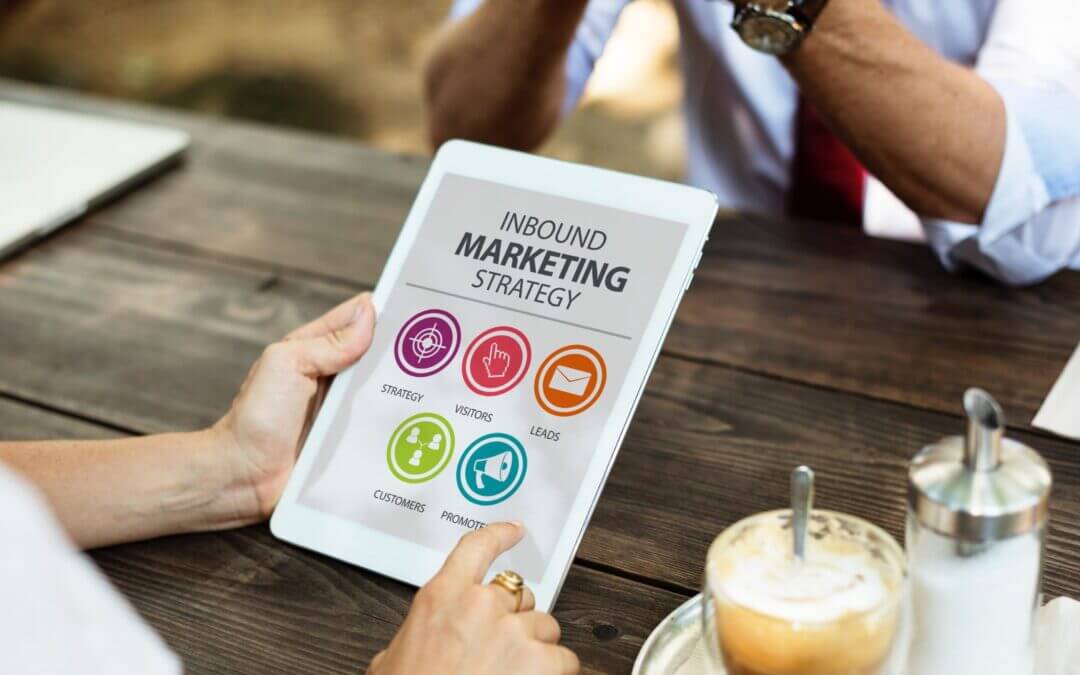
by SmarkLabs | Nov 30, 2018 | Web Development
No marketer can successfully do their job today without having a content management system (CMS) in place. Today content management systems allow you to not only edit, optimize, schedule, track, and format content, but also create websites and email campaigns. These platforms offer a collaborative environment where multiple users can work on accounts. However, each CMS varies in terms of its strengths. Whereas one platform may be the best for web design, another may be superior when it comes to blogging.
Arguably, the two most popular CMS platforms for marketers are HubSpot and WordPress. HubSpot was started in 2006 with the intent of helping smaller businesses compete, while WordPress began in 2003 as a personal publishing system. Both have evolved over time into full-fledged content management systems, offering a host of different tools to help anyone market their business.
If you’re wondering which platform you should use, look no further. In this article, we will evaluate both platforms by taking a look at 4 main factors: customer base, ease of use, personalization, and cost.
Customer base
Today, WordPress powers more than 30% of all sites on the internet according to wpbeginner.com. It’s used by some of the most notable brands, including Disney, Sony, and Microsoft. This large customer base means tech providers are likely to offer some type of integration or compatibility with the platform, meaning companies can save considerable time and frustration on tech integration when they use WordPress. Because of this, a company’s ability to be versatile is magnified with this platform.
According to a recent press release, Hubspot has 44,500+ customers in over 90 countries. This pales in comparison to WordPress’s massive ecosystem of 511,000+ active members, but it’s important to remember that HubSpot is a newer platform. However, being relatively new, HubSpot lacks the flexibility and advanced features that a more established platform provides. For this reason, HubSpot is largely still used by smaller organizations ranging from 1-10 employees per iDatalabs’ report.

Source: https://idatalabs.com/tech/products/hubspot
Ease of use
With thousands of themes, templates, and plugins to choose from, WordPress allows anyone to easily build a website without learning code. In fact, WordPress offers more than 55,000 plugins to improve your site’s functionality according to SoftwareFindr. If you’d like to add something to your site such as complex gallery or forum, there are likely multiple plugins available for you to choose from. Find yourself stuck? Don’t worry- there are a gazillion YouTube videos at your disposal that show step-by-step how to use WordPress features.

Source: https://wordpress.org/plugins/
Unlike WordPress, HubSpot has built-in tools and features so there’s no need for plugins. This limits the number of feature options a business has, but typically isn’t a problem considering HubSpot is largely used by small, enterprise companies in need of a simple site they can get up and running quickly. In addition, Hubspot offers a ton of resources in the form of blogs, ebooks, guides, reports, courses, and online groups. However, they are largely marketing-focused which can be a disadvantage if you’re looking for technical advice about design or development.
Personalization
Personalization is the key to converting leads. It offers the customer something that is relevant to them, which keeps them coming back to your website. While WordPress is great for creating beautifully designed websites, you’ll need to download additional resources in order to add personalized content on your site. Depending on what you want to personalize and how you want to personalize it, you may need to do some research to find the correct plugin.
When it comes to personalization, HubSpot has “smart content” and personalization built into their websites. This allows you to deliver content to customers based on where they are in the buying process. HubSpot even allows you to add your buyer personas to a contact list where you can then assign them a “smart rule” or personalized message. HubSpot research shows that “calls-to-action that are targeted to individuals had a 42% higher view-to-submission rate than calls-to-action that were generic,” thus proving targeted messages are extremely beneficial in reaching customers.

Source: https://www.hubspot.com/products/how-personalization-works
Cost
WordPress
There are two options when it comes to WordPress: WordPress.com or WordPress.org. WordPress.com handles everything for you- software, hosting, and managing a web server. It includes a variety of plans you can choose from ranging from free to $25 per month. Each plan offers essential features, free themes, and design customization.
On the other hand, WordPress.org is completely free and allows you to download software so you can host your own site. However, this option requires a separate web hosting account. The advantage is it offers more flexibility because you can install your own plugins, customize backend code, and upload your own custom themes.
Since WordPress is one of the most common content management systems, there are tons of developers and designers that specialize in the platform. Because of this, the cost to hire a WordPress developer is competitive and can be pricey.
HubSpot
In order to create a website on HubSpot, you’ll need to purchase their CMS. It’s available as a standalone product or an add-on to the sales, marketing, or service hub. It costs $300 a month but also gives you access to all HubSpot CRM features such as contact management, email integration, and Facebook & Instagram lead ads. Unfortunately, many of the features are limited. For example, you can only create up to 5 email templates per account and view contact activity for the first 7 days after a new contact is added.
Conclusion
When it comes to picking a website platform, WordPress is the best in terms of design and development. It offers versatility because of its large user base and advanced functionality with thousands of available plugins. In addition, people can enjoy greater ownership of their websites by downloading the WordPress.org software. However, if you’re mainly concerned with marketing and analytics, HubSpot is definitely a frontrunner due to its built-in optimization tools and in-depth marketing data.
Need help revamping your website? Drop us a line to learn how we can help.

by SmarkLabs | Nov 15, 2018 | Marketing Strategy
Account-based marketing (ABM) is taking the industry by storm. In fact, according to a SiriusDecisions study, 93% of B2B marketing leaders say ABM is imperative to their strategy. Tired of creating content that no one reads and stepping on one another’s toes, marketing and sales teams have finally begun to focus on accounts they would like to win rather than single leads or general audiences.
Of course, ABM wasn’t always the rage. This type of marketing was started in 1993, when the landmark publication The One-to-One Future pushed for personalized marketing. After its introduction, audience-targeted marketing was used more and more until the phrase “account-based marketing” was finally coined in 2004 by ITSMA. As the need for inbound marketing grew (and continues to grow), ABM gained steam and vendors offering ABM solutions became more common.
From what we’ve seen in the past, we predict that ABM will go on to become more prominent as businesses work to streamline and further customize marketing tactics. That’s why we’ve compiled an extensive list of helpful account-based marketing tactics that will take you from planning to execution to measurement.
Planning Tactics
Arguably the most important step in your ABM strategy is planning your approach. With a strong foundation based on these account-based marketing planning tactics, your ABM strategy is far more likely to succeed.
Define your Ideal Client Profile
Choosing your ideal customer profile (ICP) is your most important task. Your sales and marketing teams must collaborate to ensure that the companies you will be targeting fit your solution. You’ll need to consider the firm’s firmographics data and business needs to make the right decision.

Source: Radius
Align sales and marketing teams
Ensuring your sales and marketing teams are on the same page is the key to your entire strategy. Read Agent3 CEO Clive Armitage’s steps to ensure alignment, which includes allowing both teams to contribute ideas, choosing target accounts together, and setting up a communications process for sharing project progress as well as results.
Choose an executive sponsor
Every account-based marketing strategy needs an executive sponsor. This team member champions and guides the project in a big-picture way, ensuring that both sales and marketing teams are on board and happy. Your executive sponsor can also sweep in and mediate an issue, close a deal, or offer valuable advice about any tough decisions you may need to make.
Organize account data in your CRM solution
Before you begin your ABM execution plan, your CRM data is probably lead-based or has some serious coverage gaps. You’ll need to change from lead-based reporting to a measurement structure based on accounts and contacts. This process will take some work, but there are some hacks you can use, courtesy of industry professional Lauren Frye.

Source: ChiefMarTec
Gather and maintain clean data
Companies now have access to a lot of data—but if it isn’t clean, it’s worthless. Review existing data, checking for duplication and old data, and updating mission-critical fields like company name, email address, contact name, and title. Communicate standardized data entry requirements to your teams to avoid the need for cleanups in the future.
Identify buying signals and other data
Determine the signs that indicate a company might be in the market for your product. These triggers will mark the addition of a company to your target list or the start of a new phase in your ABM marketing campaign. Depending on your product, triggers range from office moves to leadership change, and can be automated.
Commit to target account pursuit channels
Once you lock in on target companies, decide which channels you’ll use to reach them. Consider various factors, like company culture and buyer personas. For technology startups, try Twitter mentions and targeted blog posts. For established corporations, segmented email campaigns and personalized direct mail may be more helpful.
Targeting and Engagement Tactics
Now we get to the bread and butter of account-based marketing tactics: engagement. This is the stuff marketers love—creating innovative content that strikes a chord with targeted accounts.

Source: Content Marketing Institute
Tag target accounts on social
Ninety percent of businesses use social media for marketing, meaning your target accounts are probably on a few channels themselves. Monitor social channels carefully, retweeting articles created by or mentioning the target account and tagging them when appropriate. Your target account is sure to notice and appreciate the amplification.
Feature target accounts within content
Everyone likes to be heralded as an expert. Next time you’re writing a blog post, use a target account as an example of an innovative industry leader. Once you have released the blog post, tag them on social channels to be sure they—and their extended network—get a look at your work.
Conduct a mini-survey
Ask a target account employee or leader to answer a mini-survey or interview for a blog post you’re creating. This win-win-win account-based marketing tactic will draw attention to your business, flatter your target, and provide you with research for a blog post.
Create a “State of” report or case study
In a similar vein, you can create an extended report about a target customer’s industry. You may either use the target account as an example, asking for interviews or advice, or you can use the report as a way to let your target account know that you’re an expert in their field who knows exactly what product might help them out.
Host a podcast series
If you’re looking for other content formats that will draw your target accounts in, branch out with a podcast. Create a specific theme and invite guests from your target accounts to weigh in with their industry tips and tricks. Be sure to follow up with the finished product—in shareable format so the interviewee will forward it to his or her boss.
Send personalized direct mail
Direct mail has a bad rap, but actually, it has a response rate thirty-six times higher than that of email. For the best results, personalize your direct mail (a classic account-based marketing tactic) and make sure the image is out-of-the-box and fun. This guide from direct mail guru enthusem will get you started.
Ship out gift boxes
If you have the cash to spare, personalized gifts are an excellent way to establish a connection with your target account. Since your gift recipients will almost certainly read your note to see who the gift is from, take the opportunity to include a personal note that shows you know their business needs. (Just make sure the gift is one they will really enjoy.)
Deploy retargeted social ads
Retargeted social ads allow you to send your ads directly to a list of targets—as long as those targets are connected to their social accounts by their work emails or company. Given that the click-through rate (CTR) of a retargeted ad is 10 times higher than the CTR of a typical display ad, it’s worth the risk. Check out this HubSpot guide for pointers.
Create personalized landing pages
We all know that personalized content yields better results. Personalized landing pages are a great way to drive even more leads. You can customize based on company—or the individual—level, using information from past visits, browsing history, in-session behavior, and third-party data to encourage more clicks.
Host sales dinners
Whether you’re hosting a one-on-one dinner or a small network cocktail gathering, you’ll find that salespeople rarely turn down free food and drinks. One thing: make sure your event is unique. Steak dinners are ordinary, but dinner at a cinema and restaurant combo? Legendary.
Run a roadshow
Personally contact target accounts to arrange your stops and before the event, ramp up excitement with hashtags and email campaigns so you’ll have a sizeable audience. Combine your spectacular roadshow presentation with a less salesy account-based marketing tactic, like a dinner, to even out the pitch. You’ll prove your product’s value and create a strong, trust-based relationship with your target account, ultimately encouraging future engagement.

Source: B2B Marketing
Sponsor an event
Sponsoring an event that a target account cares about or will be attending is a sure way to gain entry into their hearts (and wallets). Whether you choose to make a public donation to their favorite nonprofit or provide free DJs for their rockin’ holiday party, you’ll catch their attention and their admiration, which might lead to a sale.
Participate in or host a roundtable
Most companies makes it public knowledge which industry conferences they’ll be attending. Once you know some of your target accounts will be at a certain location, try to attend a roundtable featuring one of your targets. There’s a good chance you’ll make strong connections and that other target accounts may be in the audience listening.
Measurement and Reporting Tactics
Measurement and reporting are vital to your ABM strategy. After all, how will you know whether your strategy is succeeding if you don’t measure your results? Here are the top measurement and reporting account-based marketing tactics for post-engagement use.
Track account coverage
You need to ensure all your target accounts are being engaged, and engaged thoroughly. Track factors such as the amount of research done on accounts, the number of accounts that have been engaged, and the number of contacts engaged within an account. Bizible offers a simple chart that may help guide your definition of success.

Source: Bizible
Trace account awareness
This metric can be measured by the amount of web traffic from targeted accounts, as brand Integrate notes, or views on social media ads. Though simple, account awareness is an important metric. Awareness is the first step in the customer journey—and an immediate precursor to engagement.
Measure account engagement
Ensure you track all relevant engagement metrics, including items like responses to personalized webpages, CTR on social ads, and event attendance. Though there are many opinions about ideal metrics, Engagio suggests that teams measure an account’s total minutes responding to marketing activities and engaging with sales teams.
Review conversion rates
In the planning stages, you will have determined what counts as “account conversion.” This is a vital item to measure, as it will determine your ultimate success. Because it is such an important metric, conversion rate is certainly one to review with your executive sponsor, who may have pointers regarding the best definition of this critical metric.
Gather results in regular reports
With ABM, regular reports are vital. Reports should be short and simple—something that employees can skim through and comprehend. The more obvious it is which areas need improvement, the more quickly your teams can take action. As B2B software brand Bizible notes, ABM measurement software can simplify the reporting process.
Communicate your results
At the end of the day, communication is key. Be sure that sales and marketing teams are sharing reports, making constant changes to improve their strategy, and keeping their eyes on the goals ahead.
Whether you are planning your ABM strategy or preparing a final report, we hope this list of account-based marketing tactics will be helpful well into 2019. And if you need help setting up any part of your strategy, we’re here to help.
Interested in learning more about ABM? Check out our blog post 5 Effective Account-Based Marketing Strategies For B2B Companies.

by SmarkLabs | Nov 9, 2018 | Marketing Strategy
Pulling off a successful product launch is never easy. It requires extensive planning and flawless execution. Many companies make the mistake of rushing their product to the market before doing the necessary research and preparation, which can lead to a disappointing reaction from buyers.
In order to help you achieve the best results possible, we’ve made a list of the top 5 marketing mistakes you should avoid when launching a new product or feature.
1. Constructing a poor value proposition
If you read our article The Top 10 B2B Value Proposition Examples (And How To Create Your Own), you know that a value proposition is important. It persuades buyers to purchase your product by stating what it offers and how it’s different from other brands. If your value proposition is unclear or wordy, you may need to rethink your product. Ask yourself, is my product unique? Does it solve a problem for my buyer?
In addition to a value proposition, it helps to create a story about your product that is relatable to your audience. According to The Insider, “a recent study suggests that by telling their brand story well, companies have the power to increase the value of a product or service by over 20 times.” Frame your product as a solution to a common problem or frustration your buyer experiences. Tell a story, either through video or compelling copy, and use emotion to communicate your product’s value in an authentic way.
2. Neglecting to develop a marketing strategy
When it comes to a product launch, marketing is everything. No one can buy your product if they don’t know about it. The best way to get people excited about your product is by rolling out a campaign across web and social. In order to do this, you’ll need a strong marketing strategy. Here are some marketing tips for a successful product launch:
- Keep in mind who your audience is and determine what channels you should use to reach them
- Establish your messaging or how you want to position your product- aim to communicate the valuable aspects of your product without going into too much detail about specific features
- Design branding materials that tie all your textual and visual elements together in a cohesive way
- Plan ahead and organize your content by creating an editorial calendar
- Give your team enough time to roll out the product successfully and make sure there aren’t any conflicts with your product launch date
If you need help executing a marketing strategy for your product launch, contact us.
3. Assuming there’s a need for the product/feature/version 2.0
Don’t just assume your product is great and everyone will want to buy it. Conduct research and find out whether there’s actually a need for it. This should be the first step you take when you develop an idea for a product. Pay close attention to industry trends, buyers, and competition. Here is a list of 17 tools and resources you can use to conduct market research.
After doing research to confirm there’s a market for your product, take it a step further and build a prototype so people can test it. Once you have the prototype, you can do beta testing. This involves sharing your product with a small audience so you can gather data and make improvements before it’s released. Beta testing is basically a test launch and provides you with real-time feedback. It allows you to feel confident your product is ready to be put on the market.
4. Vaguely defining target audience
It’s important to make sure you’re targeting the right people with your product, otherwise, it won’t sell. Make your target audience as specific as possible by developing buyer personas. According to HubSpot, “a buyer persona is a semi-fictional representation of your ideal customer based on market research and real data about your existing customers.”
Developing these personas allows you to paint a clear picture of your target audience with key details such as where they live, what industry they work in, and what publications they read. With this information, you’ll be able to form a better marketing strategy to reach your target audience.
To learn more about buyer personas, check out our blog post What Are Buyer Personas And Why Do We Need Them?
5. Failing to include a testimonial or user story
You can tell people your product is great and easy to use, but don’t expect them to just take your word for it. It’s crucial to build trust in your brand and that’s done through testimonials and user stories. Use the feedback you received during beta testing to create these narratives. People will be more likely to purchase your product if they know others had a positive experience with it. Share the testimonials and user stories in your marketing campaign and include them on your website for potential buyers to see.
Bottom Line
It’s tempting to overlook certain steps and rush your product to market for an immediate reward, but you’ll see more success if you invest time and resources into your product launch. Develop a strong value proposition, establish a marketing strategy, do extensive market research, create buyer personas, and showcase user stories. That way, you can be certain you’re offering a great product that buyers will love. Lastly, don’t be afraid to enlist the help of an agency that has the expertise and know-how to deliver results.
Drop us a line to learn how we can help with your next product launch.

by SmarkLabs | Nov 5, 2018 | Marketing Strategy
Few companies stand alone in their field. No matter what product or service you sell, there will always be someone else offering the same thing. How can you make your brand stand out in the face of competition?
The answer is a well-crafted value proposition. A value proposition is your pitch for why someone should choose your company over another brand. It’s the first thing someone sees when they visit your website so it’s important it leaves a strong impression. A value proposition allows you to set yourself apart from your competition and explain your worth in easy to understand language. Clients want to know they will get their money’s worth from their investment in you and a value proposition assures them of that.
How you explain your value can make or break a sale. Check out how these brands nailed their value proposition so you can too.

MailChimp sets itself up as a smarter marketing solution through their email service. It appeals to your business aspirations, whatever they happen to be, and shows how a partnership could be beneficial. Notice how they speak in the second person. It’s often said that “you” is one of the most powerful words in the English language because it draws your audience in through a personal appeal.

Slack understands that a simple value proposition is a powerful one. Their proposition clearly establishes itself as an app for the workplace and speaks to anyone who needs a simple way to communicate with their coworkers. Being an app that streamlines and offers productivity, it makes sense that Slack wouldn’t waste time with a lengthy tagline explaining what they do.

HubSpot takes on a difficult challenge by putting together a value proposition for three services- marketing, sales, and service software. Yet, they manage to fit them together seamlessly into one overarching message: “a better way to grow.” HubSpot shows the genius of unifying your brand, no matter how many services or products your company may offer.

Evernote has a clear market: the busy professional who needs to stay organized. Their value proposition promises effortless organization, and their service delivery by allowing you to easily arrange all your notes in one place. In addition, they show the app can be used on a desktop or mobile platform.

Square’s value proposition targets consumer good companies by introducing a tool that accepts any payment method. Their value lies in helping you be more adaptable to your customer. Square also showcases a video as an extension of their value proposition, allowing viewers to learn more about the product without having to wade through endless text.

Stripe is another tool for online payments but exemplifies the power of a value proposition in a different way. They frame themselves as the ideal tool that others should aspire towards and capitalize on their past successes- “we handle billions of dollars every year.” Many businesses fear they won’t receive ROI after they purchase a service. Stripe addresses this by providing evidence they are established and trusted.

Unbounce uses its widespread use as a value proposition. Not only are they big enough to serve over 15,000 brands, but they also list the major companies that use their product. Their value proposition lets companies know there is no company too large or small for them to help with conversions.

Many businesses struggle to find the right talent and Proven understands this. Their value proposition is about giving businesses peace of mind and ease with their hiring. Proven also does a great job by focusing on the client in their proposition, rather than listing everything they can do. A strong proposition is not about listing talents and credentials, but focusing on the client’s needs.

BigCommerce does a brilliant job of including a call to action in their value proposition. In one simple sentence, BigCommerce tells you what they do and urges you to try it. They make a big impact without wasting valuable time.

Bitly uses action words such as “click, tap, and swipe” to describe what they do in a creative way. Their value proposition is effective because it offers companies the ability to take advantage of the way people interact with their website. By using phrases such as “the world’s leading link management platform,” they are branding themselves as the best in their industry.
How to Make Your Own Value Proposition
Now that you’ve explored other companies that have crafted the kind of value propositions that sell, how do you create one for your business? It’s time to get to the heart of what you do and how it benefits your customer.
Your value proposition needs to include:
- What you do
- Who you serve
- How you’re different
Once you’ve determined these points, keep in mind the following key factors when it comes to writing a proposition:
Clarity. If it’s not immediately obvious what your business does, potential clients will quickly lose interest in you. They do not want to dig to find out exactly how you can help them. Your value proposition must be easy to understand.
Specificity. Your value proposition needs to tell the client what they will exactly get from you. Efficiency? Revenue growth? How specifically will they benefit from your product or service?
Uniqueness. Your potential clients want to know what sets you apart. Explain to them what makes you different and better.
Efficiency. You have mere seconds to impress. A value proposition needs to get straight to the point. This is not a time to get bogged down in the details of your business. If it takes longer than 5 seconds to be both read and understood, it’s too long.
Give Your Business an Edge
The value proposition, when used correctly, can have a major impact on how other businesses see you. By letting potential clients know how your company stands apart from the competition, you can give yourself an edge.
Once you have a value proposition, you’re on your way to building a successful brand. However, it takes marketing initiatives to really get your brand on its feet. That’s why we’ve created a toolbox that provides you with everything you need to start growing your business. The Smark Toolbox includes everything from blog writing guidelines to growth tactics. Access it here.

by SmarkLabs | Nov 1, 2018 | Content Marketing
What makes a successful content marketer? When it comes to B2B content marketing, the Content Marketing Institute and its partners publish an annual review called B2B Content Marketing: Benchmarks, Budget, and Trends-North America that sheds light on some of the best content marketing practices.
The 2018 version of that report provides a number of insights as to what the most successful B2B content marketers in North America are doing differently than everyone else. By studying successful content marketers and their strategies, you can focus and improve your efforts.
Here, we list the characteristics shared by organizations that described their content marketing as extremely or very successful.
1. A Documented Content Marketing Strategy
Writing down a clear and specific strategy is important. It should include the goals you want to achieve and contain a profile of your target market, often in the form of buyer personas. Use what you already know about your audience. For example, identify your existing posts that get the most attention. Use analytics to determine which types of content generate the most engagement. Focus on that content and conduct keyword research to gather new content ideas.
2. A Mature Content Marketing Effort
Gartner has developed a Maturity Model for Content Marketing that shows organizations how to advance their marketing efforts over time by highlighting key milestones. The model includes 5 different levels, beginning at level 1 with a nonexistent strategy and progressing to level 5 with content being integral to a frictionless customer journey. Although you can’t suddenly make your content marketing strategy more mature overnight, you can consciously work toward higher levels of maturity.
3. A High Level of Commitment
Research shows that only 20 percent of marketers think their organization is highly committed to making content marketing work. This is a problem because content marketing takes considerable time, effort, and money. Content marketers need the automated tools that will help them achieve success. They need insights from marketing and sales to refine their approach over time. If the leaders of an organization aren’t committed to content marketing efforts, their team will end up doing a poor job. Therefore, it’s best to devote the required resources or save your money altogether.
4. A Realistic View of Content Marketing Results
Content marketing can provide measurable results for your organization. It beats outbound marketing in terms of generating more leads and costing less. However, content marketing isn’t the cure-all some people think it will be. Content marketing works in conjunction with a solid overall marketing strategy. Anyone who is an expert in content marketing knows it isn’t an overnight success. You need time to produce results.
5. A Calendar of Regular (and Often Frequent) Publishing
It’s impossible to build an audience if your content publishing is sporadic. If you publish content daily, weekly or monthly, your audience will expect you to continue to do so. Because of this, successful organizations make publishing consistently and as frequently as possible a priority. According to Hubspot, publishing 16+ blog posts a month brings 3.5x more traffic than publishing 0 to 4 articles.
6. A Focus on Building an Audience
Content marketing allows you to create an audience of subscribers. They’re the people who want to interact with your content and have subscribed to receive it. On the other hand, a lead is someone who you have permission to email but hasn’t taken the next step and subscribed to hear from you. Make it your goal to turn leads into subscribers by creating content that people want to read. It helps to ask your readers questions about the types of content they’d like to receive by conducting surveys.
Overview
Content marketing is a tool you can use to increase your competitive edge and grow your business. If you do it right, it can have a significant impact. However, it isn’t easy and will require a clear strategy, dedicated effort, strong commitment, and focus on one’s audience. In addition, working with knowledgeable experts in the field can make all the difference.
Contact us to learn how we can help you with every stage of your content marketing strategy, from creating buyer personas to developing an impressive content calendar.

by SmarkLabs | Oct 30, 2018 | Marketing Strategy

A conference is an excellent opportunity to network with people in your industry and generate new leads for your company. To be as effective as you possibly can at lead generation, it helps to plan ahead. By strategizing ways to generate interest in your company and get people thinking about working with you, you can ensure you use your time at a conference as wisely and effectively as possible. Below, we’ve compiled a step-by-step playbook that offers strategies on how to draw in new leads.
Gather a List of Attendees
You can usually obtain a list of attendees by simply asking the host of the conference for one. However, if they don’t provide you with one, consider searching for a previous year’s list or scraping emails from a related group on LinkedIn. Once you’ve gathered your contacts, you can sort through them and see which ones qualify as potential clients and reach out to them.
Leverage Marketing Automation
Marketing automation tools like HubSpot make it easier to reach out to multiple people simultaneously. They even have the ability to track conference ROI with attribution reporting. You should use marketing automation to send emails to target prospects attending the conference, including a personalized message telling them you’d like to engage with them in person. It’s also beneficial to include information about the event, your booth schedule, or a giveaway you’re having.
Set Up Meetings in Advance
Once you know which customers and peers will be attending, be sure to set up meetings in advance. You can do this by creating and sharing an online calendar with attendees so they can schedule a meeting or demo at your booth. Make it clear they should sign up so they can skip the lines.
Plan Your Booth
Your booth is your hub and home base at the conference. Plan ahead so it looks good and serves your needs. Set up a large monitor to display a video about your company that includes key information so potential prospects can get a better idea of what your company does. According to HubSpot, 97% of marketers say video has helped increase user understanding of their product or service. Below is an example of a video we did for our client, Advent Health Partners.
Write a Pre-Conference Blog
You can generate buzz by writing and sharing a pre-conference blog post. Give readers a rundown of the event and highlight some of the key speakers and companies attending it. When you publish the blog, tag the speakers so they can see the blog and share it on their social channels. Go the extra mile by directly sending them the post with a short note on LinkedIn so they are sure to notice what you’ve written. Below is a template you can follow when writing your pre-conference blog.

Offer a Free Resource
To add value to your booth, plan to offer a free resource to any attendees you meet. This could be a comprehensive report, helpful tips, or an interview with a thought leader in your industry. As long as you’re offering quality information, you’re establishing your company as a go-to resource for others in your industry. If you’re looking for a good example of a free resource, check out our Smark Tool Box.
Conduct a Giveaway
Decide on a giveaway to draw people to your booth. You should give people a usable, everyday item. Make sure the item has your company logo on it. That way, people will see a reminder of your business daily and think about working with you. Here are 7 things to consider when choosing a conference giveaway.
Host an Event
Consider hosting an event at the conference. For example, you may want to hold a private roundtable meeting or a happy hour that attracts people from different organizations. Conferences typically involve large crowds and it can be a challenge to form meaningful connections. Holding your own private event and engaging with potential clients one-on-one will make it easier for you to nurture relationships.
Interview or Showcase an Expert
Schedule expert interviews with speakers at your booth. Big names will draw people in. You can also use this as an opportunity to generate more content. Consider repurposing the interview into a blog post or a podcast you can share on your company website.
Advertise on Social
Setup retargeting ads to market to attendees on social networks before, during, and after the conference. If someone has looked into your business or the event itself, make sure you get them to commit by reminding them again in their online ad space. In addition to running ads, you should take advantage of social to post about the event. Share behind-the-scenes pictures, video highlights, or a tour of the venue so your followers can experience the conference too.
Follow-Up
When you gain a new lead, it’s important to follow-up with them. After the conference, send follow-up emails to anyone you spoke with. Personalize each message by mentioning a specific topic you discussed. If you discussed doing business together, reiterate why you think your company’s services align with that person’s needs. Here’s an example of a follow-up email.

Get Feedback with Surveys
Improve your playbook for the next conference by using surveys. You can use survey tools to capture attendee information while gaining valuable insights. Be sure to ask them about their experience, specifically what they liked and disliked. This will allow you to learn what strategies work best and gather new ideas to implement in the future.
Need help planning for an upcoming conference? Contact us and we’ll make sure you meet your conference goals.

by SmarkLabs | Sep 12, 2018 | Marketing Strategy, Sales Enablement
We’ve all been there. You walk into a department store — just to browse. Within moments, an overzealous salesperson is pressing you to buy something that you’ve barely glanced at. Immediately put off, you’re scanning the store for the nearest exit.
This logic translates to B2B companies. A business can claim, “oh that person just wasn’t the right fit,” but HubSpot asserts that 50% of leads are qualified — just not ready to buy. For this reason, it’s imperative your company understands the difference between marketing qualified leads (MQLs) and sales qualified leads (SQLs).
An MQL is someone who meets the demographics of your ideal customer profile — the marketing term for this is “buyer persona” — and has shown meaningful engagement with your company. Examples of an MQL include signing up for your newsletter or downloading your ebook because these actions show initiative from the prospect to educate themselves on your industry.
An SQL is someone who meets the demographic criteria and has completed an action(s) that translates to, “I want to speak with sales.” Respond to actions that indicate the prospect wants to know how your company solves their problem– downloading a pricing guide or requesting a demo are just two examples that signal this type of interest.
What differentiates an MQL from an SQL will differ from company to company. The important thing is that marketing and sales are on the same page for how both are defined. Lead scoring makes this possible by enabling companies with a systematic way of differentiating the two.
What is lead scoring?
Lead scoring is the practice of assigning a point value to individual leads according to the information they’ve given you and how they’ve interacted with your website. This score helps your team prioritize leads by putting them into different buckets — MQLs, SQLs, and neither.
How you define what triggers an MQL versus an SQL will change based on the needs and capabilities of your company. For example, if your marketing strategy is mature and you receive thousands of MQLs a day consider increasing the amount of engagement someone must show before triggering that response.
With so many moving parts it can be hard to even know where to start. Luckily, HubSpot has created a lead scoring algorithm to make the process simpler. You can use the software to help with manual lead scoring or you can leave all the heavy lifting up to HubSpot.
Congratulations — you’ve sorted your MQLs from your SQLs! Now you must customize an approach for both types, but how?
The Right Way to Follow up With MQLs:
Don’t be the department store salesperson. MQLs are still just browsing and forcing them to the next stage will only drive them away. At the same time, it’s okay to reach out directly. Consider this part of your lead nurturing strategy. According to Forrester Research, “companies that excel at lead nurturing generate 50% more sales-ready leads at 33% lower cost.”
Be confident knowing that someone who triggers an MQL notification knows what your company does and is trying to learn more. Reach out with the goal of mutually assessing the fit of the potential partnership while providing them with educational resources. There are many different ways to do this, but I’m only going to provide you with two options to start.
The first option is to send a welcome email when someone first triggers an MQL notification in your system. Here’s an example from HubSpot:

Notice this person encourages the prospect to continue the relationship by providing a clear way to access additional information.
How do you nurture a lead between the welcome email and when they move to the SQL stage? The most important thing is to stay fresh in their minds. Instead of sending a response to a particular action, consistently provide content they would find interesting. Here is an example:

Research consistently shows that “a person needs to know you, your reputation, and your product or service before he/she is willing to make a purchase.” Doing this requires consistently being in the lead’s line of sight. Forwarding content to your MQLs is the simplest way to do this.
Side note: Notice that both emails are individually addressed and appear to come from a real person. Personalizing these points of contact creates the framework for building relationships — which results in MQLs converting to SQLs.
The Right Way to Follow up With SQLs:
Finally, the lead is ready to hear your pitch. Your sales team’s job is to connect the dots for the customer and fill in knowledge gaps. They want to be sure that your product will address their pain points. Simply asking them, “so how did you like that ebook?” won’t cut it. Build the conversation around an action(s) they completed which triggered the SQL notification. For example, let’s say the action was a free demo request. Shoot them an email like this:

There are two key things to notice here:
-
- Expectations for the call are set beforehand: This puts the lead at ease with the process. It also helps them prepare accordingly for the call.
- The goal is to help the customer: This is a sales call, but coming from a stance of trying to help them will allow you to understand their needs and how your company fits with them.
The Bottom Line:
The difference between an SQL and an MQL is murky. That’s why it’s imperative for your company to create a universal definition that sales and marketing stick to. Creating a definition strikes the perfect balance between educating leads and closing a deal.
Moving someone from the awareness stage of the buyer’s journey to the conversion stage can feel like you’re walking on eggshells — one false move and the lead is gone. That’s why it’s important to have experts on your side to optimize your marketing strategy. Contact us to learn how we can help you develop a strategy to reach your business growth goals.

by SmarkLabs | Sep 6, 2018 | Marketing Strategy
The content your company releases is generating leads. This is a major success! However, if you can’t pinpoint why you’re having this success, lead generation could halt as quickly as it began.
Enter buyer personas. According to HubSpot, a buyer persona is “a semi-fictional representation of your ideal customer based on market research and real data about your existing customers.” Buyer personas help you identify not just what creates leads, but why. If you know why something is happening, it’s repeatable — and having a repeatable process is the formula for long-term success.
According to a report from CoSchedule, marketers who have a documented marketing strategy are 538% more likely to report success than those who don’t. Creating buyer personas is a crucial piece to that puzzle.
A buyer persona has many different components, all of which help your marketing and sales teams get inside the minds of your ideal customers.
Take Efficiency Ed — he’s an example of a buyer persona. His profile includes everything from job title to personal objectives.

One of the most crucial components to a buyer persona are pain points. These are things the buyer persona struggles with — which your company has solutions for.

Categories of a buyer persona can be added or taken away based on the needs of your company and how much information you have on your customers. The key is to have enough information for your marketing and sales teams to understand how to effectively interact with leads and bring them closer to the bottom of the sales funnel.
How exactly do documented buyer personas get you closer to this goal? The answer is three-fold:
1. Sales and Marketing Alignment
Your marketing team is elated with the number of marketing qualified Leads (MQLs) in their database. Eager to move them to the next phase of the buyer’s journey, the marketing team forwards the leads to the sales team. After sales evaluates them, 90% are discarded. Why? The sales and marketing teams were not aligned.
When marketing and sales work together, there is increased marketing ROI, sales team efficiency, and visible top-line growth. Achieving this goal can be daunting, but documenting buyer personas is a good place to start.
Established buyer personas empower both teams with a common blueprint for who they are targeting and give insights on how to do it. For example, if sales data on your company shows 70% of customers fall into the Efficiency Ed category, marketing can shift their efforts to create more content this persona finds helpful. The result is a greater number of relevant leads.
This conclusion is logical, but the evidence is in the data. “For organizations that are aligned, there’s a 67% higher probability that marketing generated leads will close.” Buyer personas help streamline the buyer’s journey so sales qualified leads (SQLs) are not the hope, but the expectation.
2. Establishes Important Data to Collect
An Efficiency Ed, your primary persona, found your blog. He reads a post and sees your perfectly placed CTA, “Download our exclusive ebook now and access industry secrets.” All He needs to do is fill out a form for full access. Name? Standard. Email? Standard. Zip code? This doesn’t seem necessary. Work phone, home phone AND cell phone? He leaves the page and you’ve just lost your chance with a potential lead.
How do you ask enough questions so you can siphon off the MQLs to send to sales but not so many that you drive business away? Buyer personas can guide you. There aren’t hard and fast rules to which fields are okay to put on a form and which ones aren’t. Instead, figure out what fields you NEED to sort contacts by persona. For example, if your business and personas are not location specific, asking for a zip code is probably overkill.
Efficiency Ed is a COO so he wants to make things run efficiently. Adding a field that asks, “What is your goal?” will help you section off the Efficiency Eds from others. In this case, you might not need anything beyond name, email, and goal. It must be emphasized that this specific set of fields is not a rule, but is determined on a case-by-case basis in regards to your personas.
Having documented buyer personas helps you ask the right questions at the right time so you can attract as many contacts– and therefore as many leads– as possible.
3. Identifies How Buyers Can Be Influenced
Buyer personas are how you access a lead’s mind and are therefore a framework on how to relate to them. Efficiency Ed is stressed because his company uses too many systems and it slows the team down. He knows this is leading to lost revenue and wasted time. If your company has documented buyer personas you can understand what the lead (or customer) is struggling with and empathize.
Buyer Personas lay the foundation for building trust, which results in more sales and leaves the customer delighted with their investment in you.
The Bottom-line:
Buyer personas give your company direction. Defining them helps you decide who you should market your product to and how you should do it. With these two questions answered, everything else just falls into place.
Knowing how to define your buyer personas, or even just figuring out where to start, is challenging. We want to help you get there so you can start seeing results. Download our buyer persona checklist to enable a streamlined marketing and sales process built to help you reach your goals.

by SmarkLabs | Sep 2, 2018 | Content Marketing
Podcasts are one of the hottest new marketing tools of 2018 as B2B marketers look to leverage multimedia content and engage audiences. Businesses across the country from startups to the Fortune 500 use podcasting to reach their target audience where they are — on their mobile devices. For B2B marketers, a recent LinkedIn study finds podcasts to be an effective and underutilized tool, pointing to higher engagement among executives. Analysts discovered that 44% of senior-level decision-makers on LinkedIn (department heads, VPs, owners and C-suite executives) who know what a podcast is are listening to them regularly.

With the excessive use of content marketing, it is becoming increasingly challenging for B2B marketers to rise above the noise and connect with busy decision makers. Consider these five tips to launch your own successful podcast and offer real business value to your buyers:
1. Consider Your Niche
Choosing a podcast niche is difficult. You may feel like all of the good ideas are already taken. You need to be specific and relevant enough to be interesting to your audience while remaining authentic to your own expertise. Ask yourself the following questions — and write down your answers! — to help you hone your niche:
- Who is my audience? Reference your company’s buyer personas, consider when listeners will tune in (on the commute to work? at the gym?), and what challenges they face for which you can provide insight.
- What do I have expertise in? Be honest! Your expertise doesn’t have to be limited to your business’ offering or solution – a host(s) collective industry knowledge, career history, and sphere of influence all make for unique, engaging content.
- What value can I offer? Do your research – Listen to other top industry podcasts to identify what’s already being done. Is there an underserved market you can speak to? An opportunity to provide something new and fresh? Or perhaps you don’t need to reinvent the wheel – consider a popular theme or topic from existing podcasts and run with it. There’s a lot to be said for “brand-better” versus “brand-new”.
TIP: Don’t have detailed buyer personas? Get started with a free template from Hubspot
2. Align the Podcast with Your Brand
Now that you’ve got your niche figured out, the second biggest challenge in charting a course for a successful podcast is crafting the right personality, style, and energy to match that of your company. The best way to align your podcast with your brand is to gather feedback from key stakeholders on the voice and tone of your podcast should have:
- Informative
- Clever
- Experimental
- Conversational
- Casual
- Authoritative
- Energetic
- Innovative
- Funny
- Educational
The key here is to align with your brand identity – whatever that may be – so that your podcasts are perceived as genuine, authentic, and listeners trust what they hear.
3. Create a Style Guide
You’ve done the research and legwork to queue up a pretty great podcast, and are excited to get recording — but a crucial mistake many new podcasters make is forgetting to document these decisions in a centralized place. Inevitably, both internal and external contributors to the podcast will change over time. To ensure clarity and consistency, create a Podcast Style Guide as a reference manual for your show.
4. Develop a Publishing Schedule
We see it often – enthusiastic new podcasters with hopes of publishing weekly or bi-weekly episodes quickly become overwhelmed by the demands of meeting their goal schedule. Picking topics, episode research, scheduling guests, post-production, and promotion for each episode can be enough to make you want to throw in the towel. But with a bit of planning, the episode pre-production and execution tasks become routine and manageable. Whether you use your company’s project management tool or a simple Google Sheet, create a central publishing schedule that both you and your production team have access to.

Podcast Publishing Schedule
TIP: Record and produce episodes in “batches” so that you have a library ready to publish, on schedule.
5. Know the Tech Stack
Most B2B podcasters work out of home or office “studios” rather than a professional sound booth, and with the proper setup, you’d never know the difference. The growing popularity of the podcast medium has brought some fantastic new tools on the market that make it easy to create a polished recording. SmarkLabs recommendations include:
Equipment
Blue Snowball Mic: $49 (you can find additional options here depending on your budget)
Pop filter: $7.99
Sound shield: $64.99
Recording Software
Our recommended alternative to free chat apps like GoToMeeting, Uber, or Skype, is Ringr. Even if you have the perfect room and the best equipment to record, your guests may not have made the same investment. With Ringr, you get the same easy-to-use features of other meeting tools with pre-filtered audio that sounds like you and your guest recorded in the same room.
Pick one place to record and test your audio quality to fine-tune your setup. High ceilings or lots of windows? You’ll need additional sound-dampening shields to reduce echoes. Loud A/C unit humming in the background? Turn off prior to recording or pick a new venue. Take some time to become familiar with your recording software so you’re ready to record and help guests if needed.
Editing Software
The absolute best software you could use to edit your podcasts would be Adobe Audition. Its flexibility supports the editor’s needs by giving you the tools to make your recordings sound their best. It does have a slight learning curve, but it’s well worth it.
Guest Outreach
Make inviting guests easy to manage by setting up an automated outreach campaign. With a tool like Mailshake, you can generate contacts, build relationships, and manage promotion for your podcast all within the same platform.
Repurposing Content
You’re spending a lot of time producing valuable audio content for your audience – don’t let it go to waste. Use a transcription software tool like Rev to amp up the SEO value of your podcast by converting recorded audio into written content for blogs, case studies, and white papers that will drive even more traffic to your site.
6. Call In the Experts
Make no mistake, launching and regularly publishing a podcast is no easy feat. The more your audience grows, the more time you’ll need to spend researching episode topics, engaging guest speakers, and connecting with your listeners.
If you’re having trouble getting started or engagement has plateaued, it’s probably time to bring in some help. Whether you need voice talent, graphic designers, a producer, or a marketing coordinator — ask peers for recommendations and reach out for assistance to keep the show running.

by SmarkLabs | Jun 25, 2018 | Video
In many ways, video marketing isn’t about selling a product or service at all — it’s about communication. It’s about establishing the type of rich, intimate, and organic connection between your brand and target audience that turns people who may be on the fence not just into buyers, but into loyal brand advocates who will help spread your message far and wide. (more…)






































